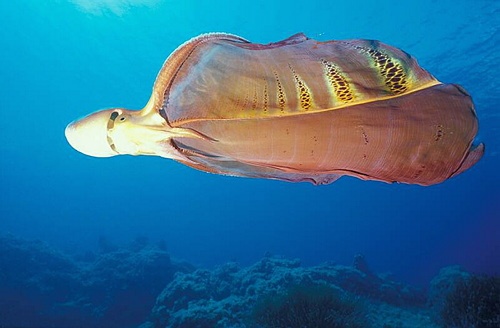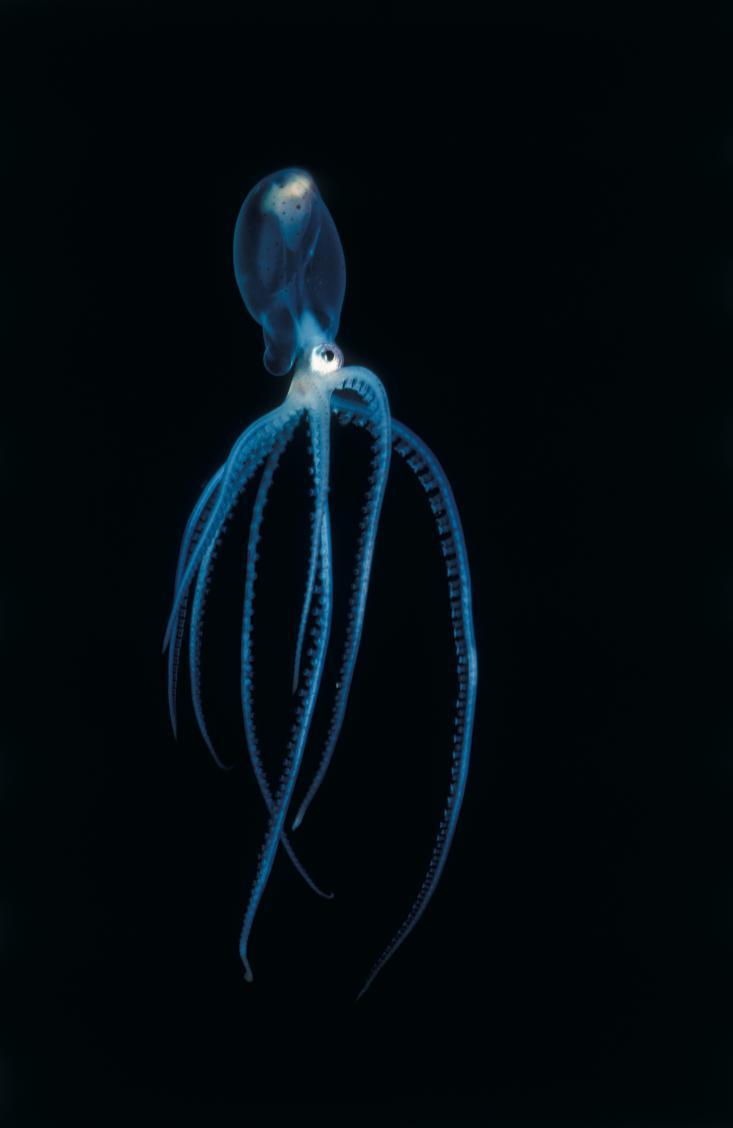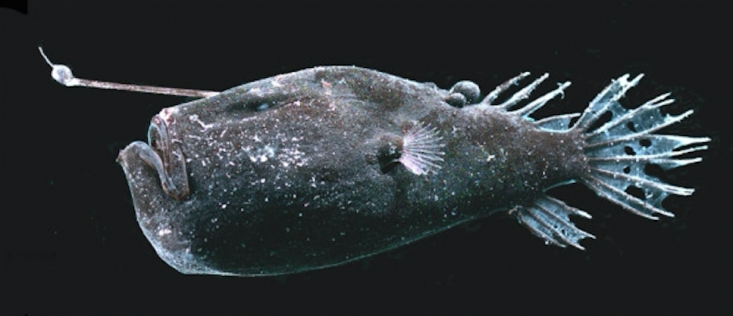What if your girlfriend is 70 times bigger than you

Female soaring octopus. The male can be the size of her eyes.
In the clear waters of the Great Barrier Reef, the male octopus soaring (Tremoctopus violaceus) swims towards the female. He does not have to worry about displaying the brightest colors or arranging show fights to win the female’s permission to approach her. It is generally unclear whether the female notices its approach.
The fact is that the length of the male octopus soaring does not exceed two centimeters. And the object of his passion often exceeds two meters in length. How can such a small male fertilize the eggs of such a large female? And here begins one of the most difficult sexual acts in nature.

Octopus male
')
Most animals require close contact for reproduction, which implies either internal fertilization (as in humans) or nearby (as in salmon). Therefore, the coincidence of body sizes helps both physically and logistically, and in terms of security. But for reasons that are incomprehensible to anyone (except evolution itself), in very rare and poorly related species, males and females have long and strongly divided in scale.
The soaring octopus, Tremoctopus violaceus, is one of the few animals that spends a lot of energy overcoming obstacles in the form of a fundamental difference in size with a partner. Males have to cover females, sometimes exceeding them by 72 times. So instead of searching for a long-term union, the male removes his special tentacle for mating (called hectocotyl ), filled with his genetic contribution, and places it near the female, so that she uses it later. He sails in the meantime with the remaining seven tentacles to a safe place, simultaneously growing old rapidly. The hectocotyl was so named because it was initially confused with the parasite with "one hundred suckers."
Another example is the male spiders. They also have to be careful, because their females are not only huge, but often engage in cannibalism. In such cases, small size can be an advantage. Nephila plumipes spiders, one of the varieties of the orb-web spiders , the small size of the male reduces his chances of becoming food. "The female may not notice the small male, - the researchers believe, - and can ignore him, because its size does not imply great nutritional value." Therefore, over time, natural selection is favored by small males who are more successful than others (due to secrecy or lack of appetizing) who avoided eating before mating (and after mating, according to the observations of scientists, nothing is guaranteed). But what stops these spiders from an uncontrolled decrease? These creatures compete with others for access to females, so it is beneficial for them to be small, but not too much.

Male and female spiders
In some cases, one gender not only represents a smaller version of the other, but practically does not develop at all. If you think that an octopus had to be reckoned with, you have not yet met a female devilfish from the family of ceratias ( angler-like squad). This deep-sea female has a massive jaw full of teeth, and a bioluminescent ball hanging in front of her face attracts victims. And their males, on the contrary, hunt only females, since they are the only hope of males for survival.
The size of the male is about 1/64 of the female, and their maw and digestive tract are not fully formed. These underdeveloped fish ply through dark waters in the hope of catching the smell or the sight of their rescuer. With the help of rudimentary jaws, they cling to her belly and eventually integrate into her metabolic system. The male remains to hang there, sometimes in the company of its “parasitic” colleagues, until the end of the female’s life, absorbing nutrients and providing it with sperm for reproduction after their puberty.

Female sea devil
Such extreme cases of difference in size make it difficult not only for the animals themselves, but also for the people who study them. For decades, no one has met a male octopus soaring, since stupid people have been looking for males similar in size to females. It was only in 2002 that one of them was identified in the wild - which serves as a reminder of the need to search outside our human ideas about mating.
Source: https://habr.com/ru/post/403765/
All Articles